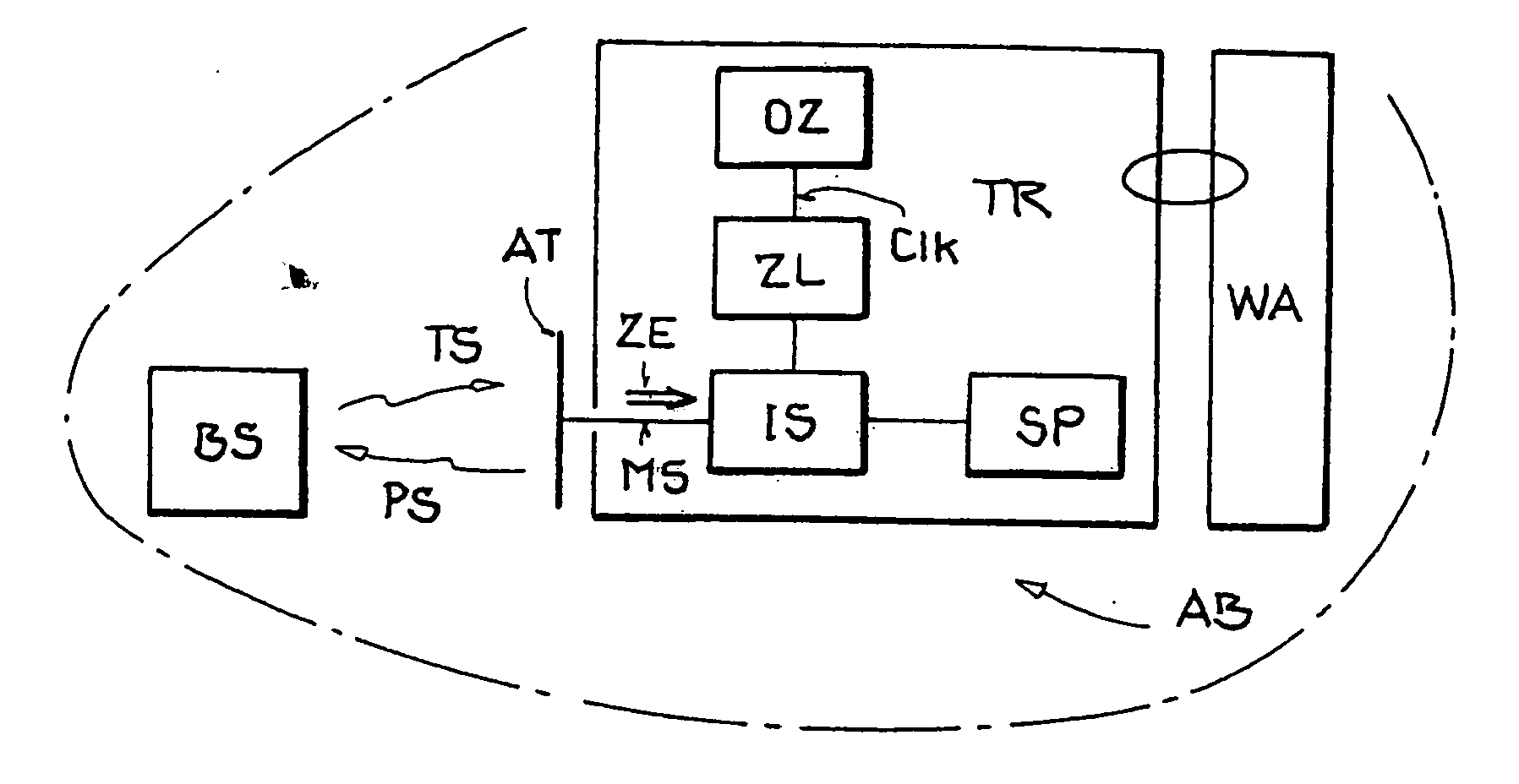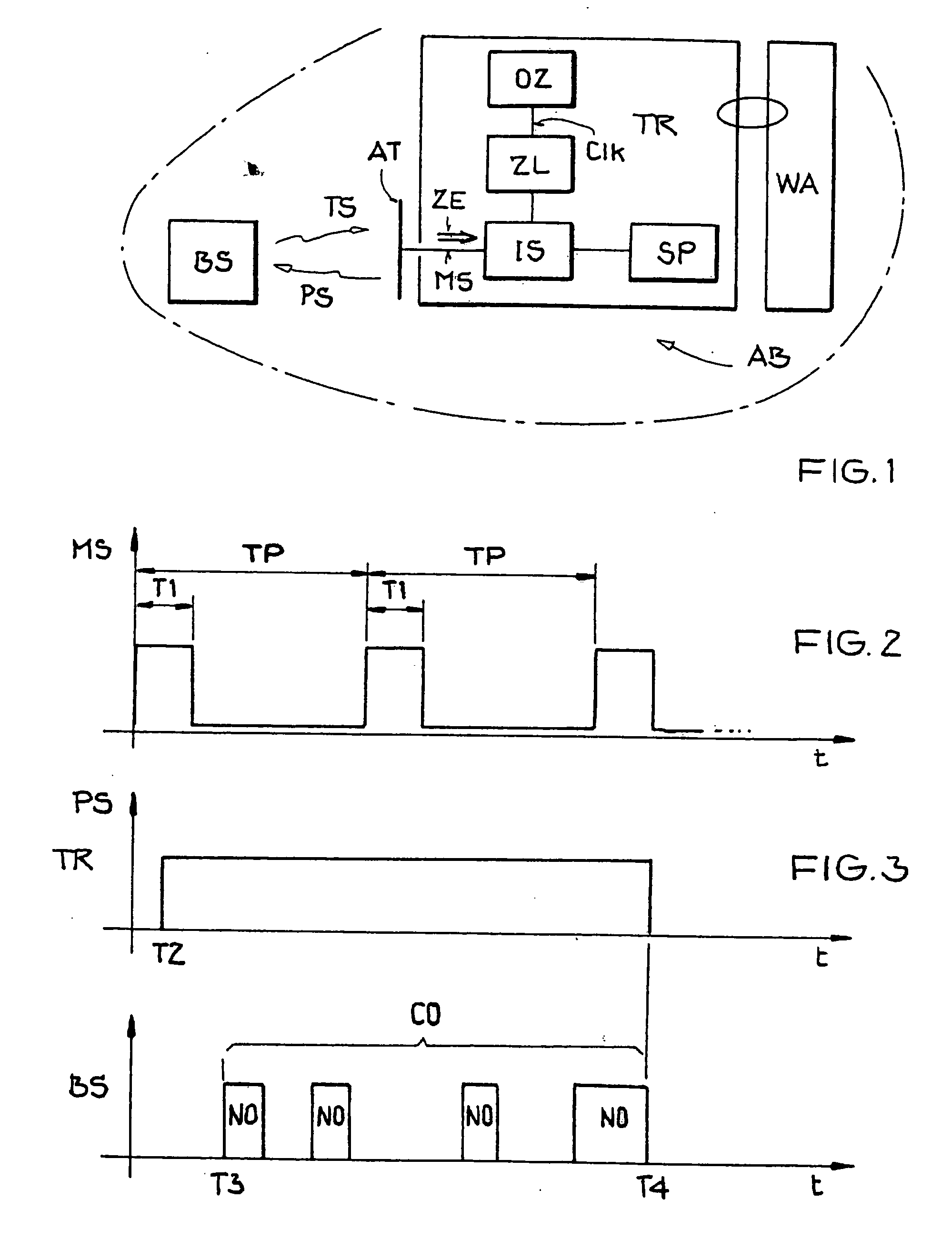Method for wireless data transmission
a wireless data and transmission method technology, applied in the field of wireless data transmission, can solve the problems of inability to realize and change the amplitude of the received carrier signal, and achieve the effect of simple and economical implementation
- Summary
- Abstract
- Description
- Claims
- Application Information
AI Technical Summary
Benefits of technology
Problems solved by technology
Method used
Image
Examples
Embodiment Construction
[0028]FIG. 1 shows an EAS system with a base station BS, an article WA to be secured, and a passive, backscatter-based transponder TR, which is affixed to the article WA and can be secured or integrated in such a way that, for example, it cannot be removed from the article by unauthorized persons. Also, the base station BS can be a radio telephony device, such as a mobile telephone.
[0029] The transponder TR comprises a memory SP, an oscillator OZ, a counter ZL, an impedance control device IS, and an antenna AT.
[0030] The base station BS can continuously emit a carrier signal TS in the UHF frequency range. When the article WA to be secured and thereby the transponder TR are brought into a response range AB of the base station, the power drawn from the carrier signal TS is sufficient to provide the transponder TR with operating power. The transponder TR performs a power-on-reset (POR), during which it is initialized.
[0031] After its initialization, the transponder TR transmits a pr...
PUM
 Login to View More
Login to View More Abstract
Description
Claims
Application Information
 Login to View More
Login to View More - R&D
- Intellectual Property
- Life Sciences
- Materials
- Tech Scout
- Unparalleled Data Quality
- Higher Quality Content
- 60% Fewer Hallucinations
Browse by: Latest US Patents, China's latest patents, Technical Efficacy Thesaurus, Application Domain, Technology Topic, Popular Technical Reports.
© 2025 PatSnap. All rights reserved.Legal|Privacy policy|Modern Slavery Act Transparency Statement|Sitemap|About US| Contact US: help@patsnap.com


